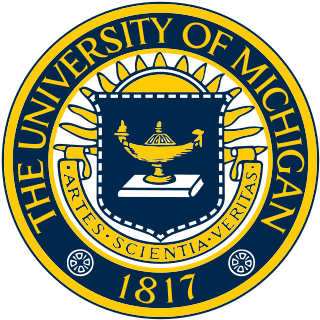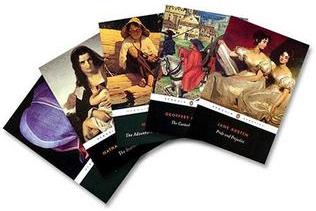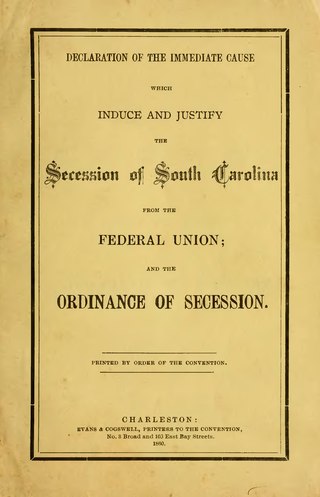
The Dewey Decimal Classification (DDC), colloquially known as the Dewey Decimal System, is a proprietary library classification system which allows new books to be added to a library in their appropriate location based on subject. It was first published in the United States by Melvil Dewey in 1876. Originally described in a 44-page pamphlet, it has been expanded to multiple volumes and revised through 23 major editions, the latest printed in 2011. It is also available in an abridged version suitable for smaller libraries. OCLC, a non-profit cooperative that serves libraries, currently maintains the system and licenses online access to WebDewey, a continuously updated version for catalogers.

A library catalog is a register of all bibliographic items found in a library or group of libraries, such as a network of libraries at several locations. A catalog for a group of libraries is also called a union catalog. A bibliographic item can be any information entity that is considered library material, or a group of library materials, or linked from the catalog as far as it is relevant to the catalog and to the users (patrons) of the library.

The University of Michigan Library is the academic library system of the University of Michigan. The university's 38 constituent and affiliated libraries together make it the second largest research library by number of volumes in the United States.

Penguin Classics is an imprint of Penguin Books under which classic works of literature are published in English, Spanish, Portuguese, and Korean among other languages. Literary critics see books in this series as important members of the Western canon, though many titles are translated or of non-Western origin; indeed, the series for decades since its creation included only translations, until it eventually incorporated the Penguin English Library imprint in 1986. The first Penguin Classic was E. V. Rieu's translation of The Odyssey, published in 1946, and Rieu went on to become general editor of the series. Rieu sought out literary novelists such as Robert Graves and Dorothy Sayers as translators, believing they would avoid "the archaic flavour and the foreign idiom that renders many existing translations repellent to modern taste".

In library and information science, cataloging (US) or cataloguing (UK) is the process of creating metadata representing information resources, such as books, sound recordings, moving images, etc. Cataloging provides information such as author's names, titles, and subject terms that describe resources, typically through the creation of bibliographic records. The records serve as surrogates for the stored information resources. Since the 1970s these metadata are in machine-readable form and are indexed by information retrieval tools, such as bibliographic databases or search engines. While typically the cataloging process results in the production of library catalogs, it also produces other types of discovery tools for documents and collections.
A union catalog is a combined library catalog describing the collections of a number of libraries. Union catalogs have been created in a range of media, including book format, microform, cards and more recently, networked electronic databases. Print union catalogs are typically arranged by title, author or subject ; electronic versions typically support keyword and Boolean queries. Union catalogs are useful to librarians, as they assist in locating and requesting materials from other libraries through interlibrary loan service. They also allow researchers to search through collections to which they would not otherwise have access, such as manuscript collections.

Charles Coffin Jewett was an American librarian, in 1848 becoming the Librarian and Assistant Secretary of the Smithsonian Institution before being appointed superintendent of the Boston Public Library in 1858. He was born in Lebanon, Maine.
Kenneth Yasuda was a Japanese-American scholar and translator.

Kharkiv State Scientific Library of Vladimir Korolenko – second by book fund after the Library of Vernadsky in Kyiv, Ukraine. There are 12 reading rooms for 524 places.

A Catalogue of Books Printed in the Fifteenth Century now in the Bodleian Library is a short-title catalogue of more than 5,600 incunabula held in the Bodleian Library at the University of Oxford. Bod-inc. stands out among incunabula catalogues for its detailed listing of the contents of each edition being described. It was published on 7 July 2005 by Oxford University Press in six volumes.
NUCMC is the abbreviation for the National Union Catalog of Manuscript Collections. It is a national-level program based at the Library of Congress that seeks to promote free access to the documentary heritage of the United States. It does this by providing cataloging for archives and historical societies around the country that do not have access to national online databases. The program started in 1959 and published bound volumes of cataloging records until 1993. As of 1986, the cataloging records were input into RLIN, the Research Libraries Information Network, an international online database. As of September 2007, all cataloging records in RLIN have been migrated into the OCLC database (WorldCat), since RLIN was merged into OCLC. All cataloging since that time has been input into OCLC. It is not related to the NUC Pre-1956 volumes.

Confederate imprints are books, pamphlets, broadsides, newspapers, periodicals or sheet music printed in the Confederate States of America in a location which, at the time, was under Confederate and not Union control. Confederate imprints are important as sources of the history of the Civil War and many institutional libraries have formed large collections of these works. A number of checklists and bibliographies of them have been published, one of which catalogs 9,457 imprints.
John Philp Wood was a Scottish antiquary and biographer.
Oriental, Op. 232, No. 2, is a composition by Isaac Albéniz.
A Legal Bibliography of the British Commonwealth of Nations, formerly Sweet & Maxwell's Legal Bibliography, is a bibliography of law published in London by Sweet & Maxwell.

Flora Belle Ludington was an American librarian and author. Ludington served as the head librarian for Mount Holyoke College in South Hadley, Massachusetts, from 1938 until 1964.
German harpsichordist, musicologist, and teacher Edith Weiss-Mann was born in Hamburg to businessman Emil Weiss and his wife Hermine Rosenfeld Weiss. She studied at Hamburg's Hochschule für Musik from 1900 to 1904. In 1905, she continued her studies privately with James Kwast, Carl Friedberg, Jose Vianna da Motta, and Bruno Eisner. After meeting harpsichordist Wanda Landowska, Weiss-Mann began to concentrate on the harpsichord and early music.

Mary Berri Chapman Hansbrough was an American poet and painter.

Book Review Digest is a reference work by H. W. Wilson Company that compiles recent book reviews. Printed monthly with annual compendia, it digests American and English periodicals from 1905 to the present day. Before the Internet, Book Review Digest was a significant reference tool and bibliographic aid used by the American public and librarians alike to find current literature. An online edition of the collection is offered in two subscription products: Book Review Digest Retrospective (1905–1982) and Book Review Digest Plus.












